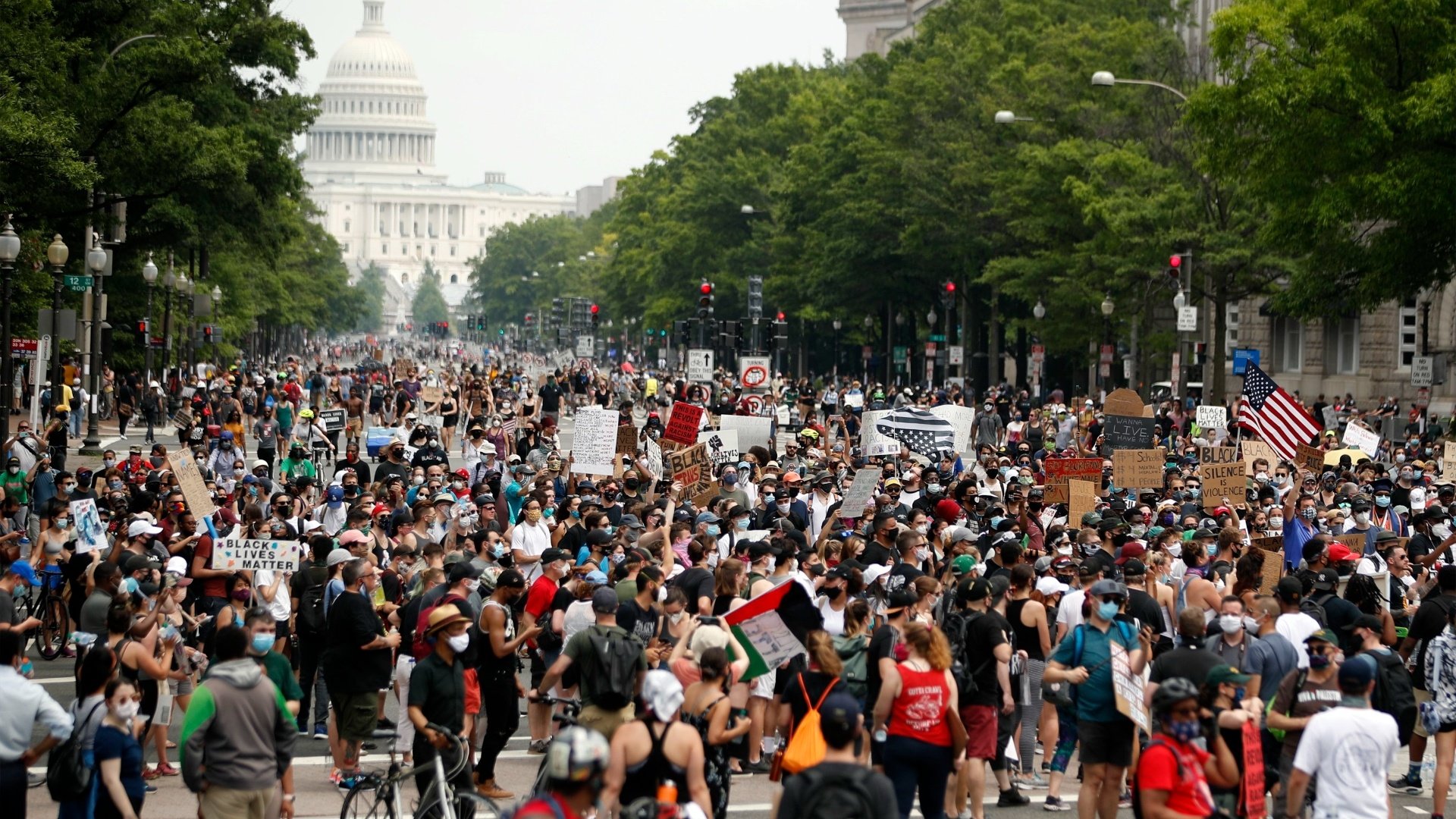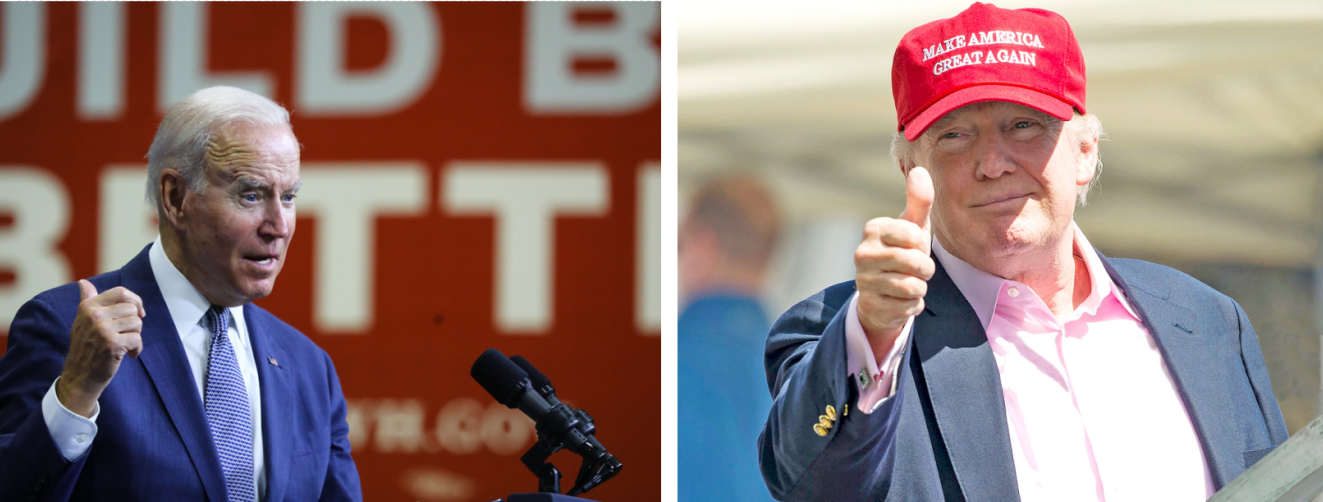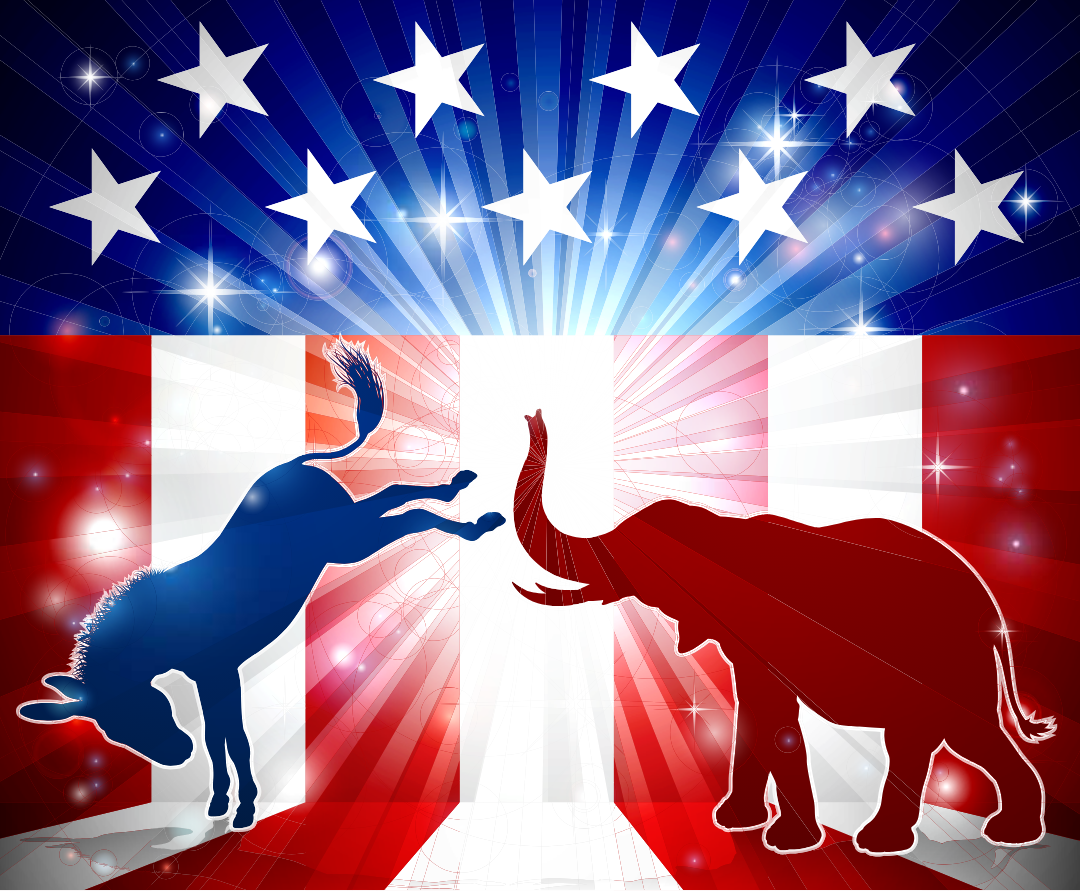Exploring the underlying dynamics of political calcification and parity provides crucial insights into the anatomy of American political dysfunction.
What to know:
-
Political calcification describes the hardening of voters' political preferences, making them unyielding in their loyalty.
-
Evolutionary psychology reveals how deeply ingrained instincts shape political affiliations and perceptions of the "other."
-
Political parity, with its closely balanced power dynamics, fuels a constantly shifting environment, where minor voter behavior shifts wield significant governance changes and deepen political calcification.
-
Trump's political ascendancy exemplifies the exploitation of primal instincts to galvanize support and sow discord.
-
Technological advancements amplify polarization by fortifying ideological divides and limiting exposure to dissenting opinions.
-
Economic disparities fuel resentment and frustration, leading to heightened political polarization.
The landscape of American politics stands as a battleground where entrenched ideologies clash, and electoral outcomes teeter on the edge of a knife. Examining the details of this division reveals an intriguing interaction between variables, with political parity and calcification playing a major role.
Drawing from the insights of leading political scientists Lynn Vavreck and John Sides, alongside analyses from notable commentators like Ezra Klein and Bill Gates, the fabric of American polarization and its underpinning psychological, technological, and historical forces are revealed.
Understanding Political Calcification
Political calcification, as explained by Vavreck and Sides in "The Bitter End: The 2020 Presidential Campaign and the Challenge to American Democracy," emerges as a defining feature of contemporary American politics. This book outlines a terrain in which voters' political preferences harden, making them unyielding in their loyalty and unresponsive to appeals. Through a meticulous examination of voter behavior and electoral dynamics, Vavreck and Sides uncover the mechanisms driving this calcification, illuminating the challenges it poses to democratic processes.
The Ezra Klein Show, hosted by Ezra Klein, features interviews with political scientists Lynn Vavreck and John Sides about their latest book. The transcript was released as an article style read and discusses how political preferences have become more fixed and less movable, making voters more predictable and less willing to switch parties. The parties are very closely matched in power and competitive in elections, so even small shifts in voter turnout or preferences can radically reshape the direction of the country. The political scientists surveyed 500,000 voters and shared what they have learned for the midterms and beyond. Their latest book is more than just an analysis of the 2020 election.
Exploring Political Parity
Within the complex tapestry of contemporary American politics, the concept of political parity emerges as a pivotal force shaping the political landscape. Defined by Vavreck and Sides as the closely balanced power dynamics between parties, political parity fuels a constantly shifting environment where minor shifts in voter behavior wield significant governance changes.
In their discussion with Ezra Klein, Vavreck and Sides emphasize the shrinking majorities of both parties, highlighting the high stakes of each election. They illuminate how even small shifts in voter turnout or preferences can lead to substantial alterations in the direction of the country. This delicate balance amplifies the impact of political calcification, as parties are less incentivized to adapt or engage in introspection following electoral losses.
Vavreck and Sides illustrate how political parity intensifies the competitive nature of elections, making the parties more responsive to even the slightest fluctuations in public sentiment. This dynamic underscores the fluidity of the political landscape and the critical role of individual voter behavior in shaping governance outcomes.
Vavreck and Sides' Insights: Unveiling the DynamicsVavreck and Sides explore the idea of political calcification and highlight its significant ramifications for American politics in their conversation with Ezra Klein. They illustrate how 2020, despite its tumultuous events, mirrored the electoral outcomes of 2016, attributing this phenomenon to the long-standing process of calcification within the electorate. Based on their comprehensive research, which comprised 6,000 interviews per week for 87 weeks, they clarify the causes of this inflexibility, stressing the reorganization of people into more similar groups and the growing distance between them. They also emphasize how the conflict dimension is changing from traditional policy issues to identity-related ones, which exacerbates polarization. Vavreck and Sides also elaborate on the idea of party parity, explaining how closely balanced power dynamics create an environment that is constantly changing. They emphasize the shrinking majorities of both parties and the consequent high stakes of each election, wherein small shifts in voter behavior can yield substantial changes in governance. This equilibrium, they argue, amplifies political calcification, as parties are less incentivized to adapt or engage in introspection following electoral losses. Lastly, Vavreck and Sides illuminate the rapid polarization surrounding issues like immigration, tracing its evolution from a nonpolarized to hyperpolarized terrain. They underscore the pivotal role of influential figures and media dynamics in shaping public perceptions and exacerbating partisan divides. Through their discourse, they offer a comprehensive understanding of the intricate forces at play in contemporary American politics, highlighting the challenges and opportunities for navigating its complex landscape. |
Vavreck and Sides warn that elections receive the most attention and analysis when we know the least about them, and it takes time to collate the data and run the numbers to see what happened on a deep level. After the past three presidential elections, the political scientists have been trying to assemble a detailed, data-rich lookback to develop a lot of information about the American electorate.
The Nexus of Psychological Forces
At the heart of these phenomena lie primordial psychological forces, as articulated by our innate proclivity towards tribalism and group identity. Sifting through the annals of evolutionary psychology, we uncover the roots of affective polarization, where emotions intertwine with political preferences to deepen divisions and fuel animosity.
Trump’s Tactics in PolarizationTrump's strategic approach to politics, particularly evident during his Republican National Convention, underscores his reliance on partisanship and polarization as a means to secure a second term. By framing the election as an us-versus-them battle, he taps into primal instincts and deep-rooted divisions within American society, emphasizing the need for a stark choice rather than a nuanced referendum on his presidency. This deliberate polarization is evident in his rhetoric and messaging, which portray Democrats as enemies of democracy and champions of extreme ideologies. Through such tactics, Trump aims to solidify his base of support and mobilize voters by tapping into their fears and grievances, ultimately shaping the political landscape into one of heightened polarization and divisiveness. |
Trump's political ascendancy serves as a poignant case study, epitomizing the exploitation of these primal instincts to galvanize support and sow discord. Evolutionary psychology provides a compelling lens through which to examine these phenomena, revealing how deeply ingrained instincts shape our political affiliations and perceptions of the "other."
Affective polarization emerges as a key manifestation of these psychological forces, where emotions intertwine with political preferences to solidify ideological divides. As individuals become increasingly entrenched in their respective camps, the polarization deepens, creating a climate of animosity and distrust. This phenomenon transcends mere disagreement on policy issues, extending to the very essence of identity and belonging.
Technological Catalysts and Cultural Echo Chambers
In the digital age, technological advancements have emerged as potent catalysts in amplifying polarization. Fragmented media landscapes and algorithmic echo chambers perpetuate insular worldviews, fortifying ideological divides and constraining exposure to dissenting opinions. Through a synthesis of scholarly insights and real-world examples, we dissect the role of social media, cable news, and partisan clustering in exacerbating polarization, shedding light on the labyrinthine nature of modern political discourse.
Bill Gates illuminates the profound impact of group identity on shaping human behavior within American politics. Gates emphasizes that political identity has become increasingly entrenched, overshadowing issues-based decision-making. He acknowledges the role of social media in exacerbating polarization, while also recognizing that the issue runs deeper than online platforms alone. Gates' insights in his notes about Ezra Klein’s “Why We’re Polarized” underscore the multifaceted challenges of modern political discourse and the daunting nature of addressing polarization.
The Role of Economic Disparities
In addition to psychological, technological, and historical factors, economic disparities play a significant role in exacerbating polarization. The widening gap between the wealthy elite and the working class fuels resentment and frustration among segments of the population, leading to heightened political polarization.
Issues such as income inequality, job insecurity, and access to healthcare become deeply intertwined with political identity, further entrenching divisions within society. By examining the socio-economic underpinnings of polarization, we gain a more comprehensive understanding of its complexities and the challenges it poses to democratic governance.
Impact of Globalization and Cultural Shifts
Globalization and cultural shifts also contribute to the polarization landscape in America. The rapid pace of globalization has led to increased interconnectedness and cultural exchange, but it has also fueled fears of cultural homogenization and loss of identity. Political leaders frequently take advantage of these anxieties to energize and win over their supporters.
Political polarization is further exacerbated by cultural issues like immigration, diversity, and shifting social norms, which provide a platform for conflicting national identities. By exploring the impact of globalization and cultural shifts on political polarization, we uncover the nuanced intersections between global trends and domestic politics, shaping the contours of contemporary American society.
The Role of Education and Information Access
Education and information access play a crucial role in shaping attitudes and perceptions towards politics and society. Socioeconomic polarization is exacerbated by differences in political awareness and engagement levels, which are a result of disparities in educational attainment and information availability.
It gets harder to tell fact from fiction as a result of the widespread spread of false information and disinformation in the digital age. Addressing these disparities and promoting media literacy are essential steps in mitigating polarization and fostering a more informed and engaged citizenry.
Conclusion
In the midst of today's highly polarized political landscape, understanding the complex web of factors at play offers a glimmer of hope. By delving into the intricate dynamics of psychology, elections, and societal trends, we gain valuable insights that can lead to real progress.
Consider the concept of political calcification. This term describes how people's political beliefs become hardened over time, making them less likely to change their minds or consider alternative viewpoints. But why does this happen? It's a combination of factors, including how similar people within each party have become and the widening gap between the two major parties. Plus, the issues we're debating have become more personal and emotionally charged.
On the flip side, there's electoral parity, which means that the balance of power between parties is often very close. This can lead to dramatic shifts in political control with just a small change in voter turnout or preferences. It also means that parties are less likely to change their strategies, which can contribute to further calcification.
So, what's the solution? It's not simple, but it starts with recognizing the complexity of the problem. We need to encourage open dialogue across party lines and rethink how information is presented in the media. By promoting media literacy and civic engagement, we can empower citizens to make informed decisions and bridge the divides that have become so entrenched.
In short, addressing polarization requires a multifaceted approach that goes beyond partisan politics. By embracing the complexities of our democratic journey, we can move toward a more united and inclusive society.





